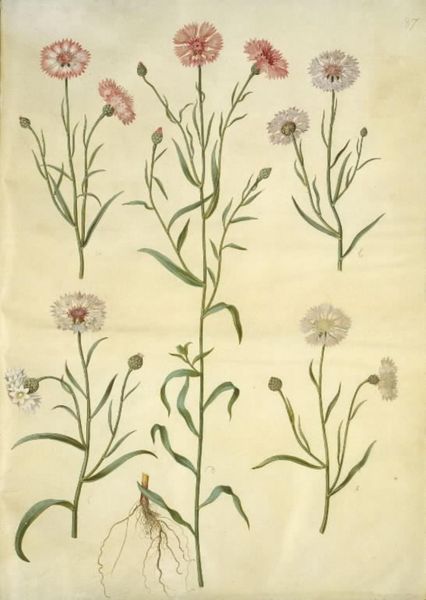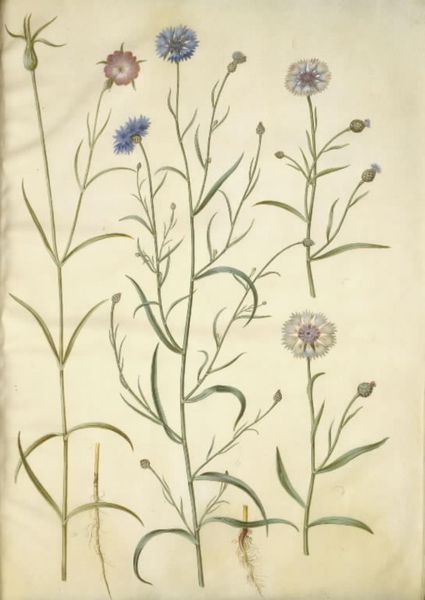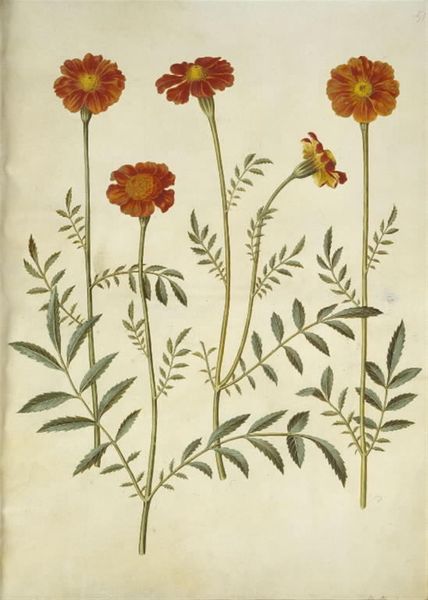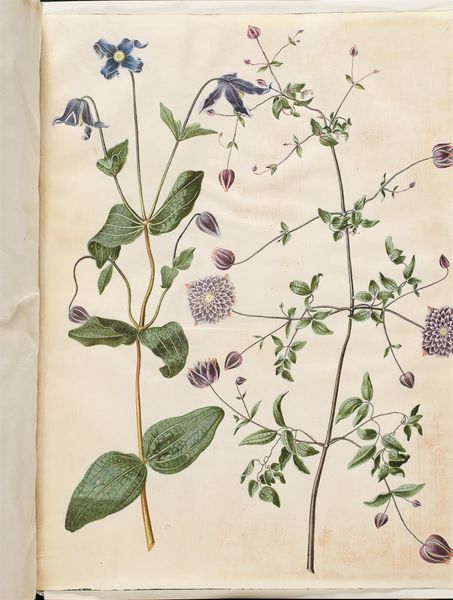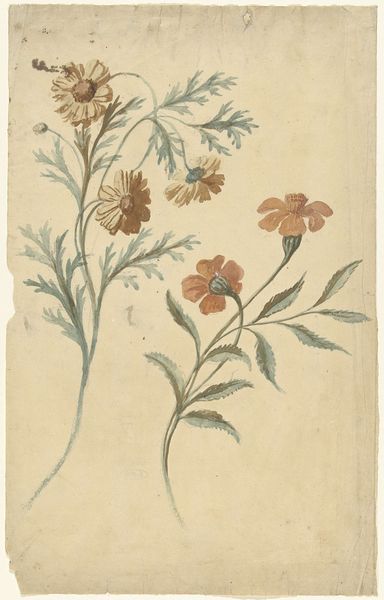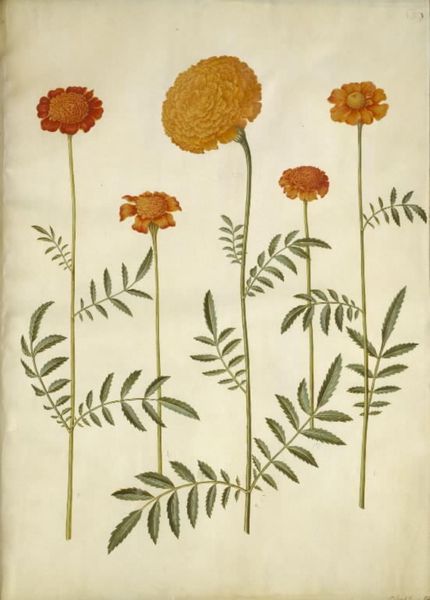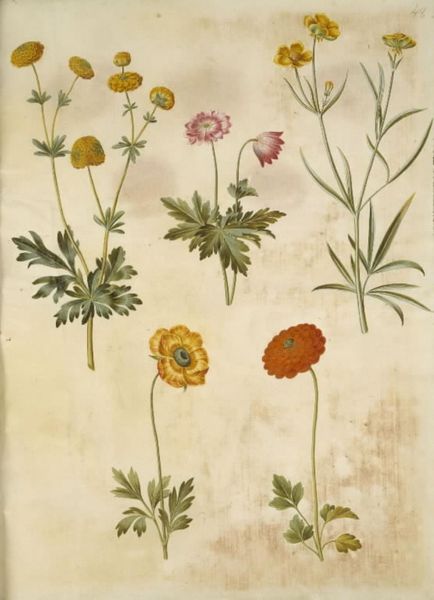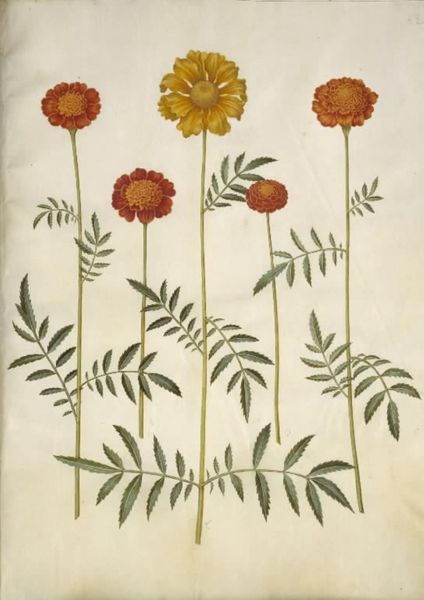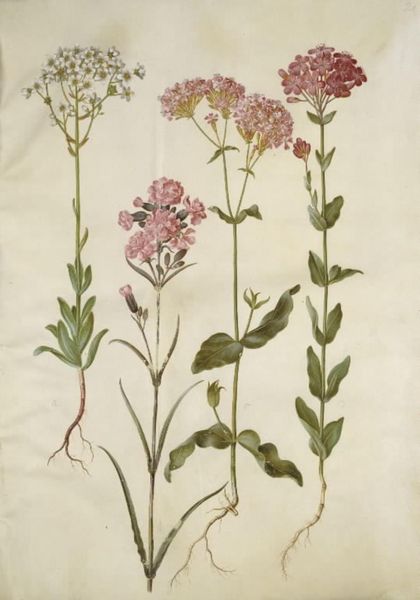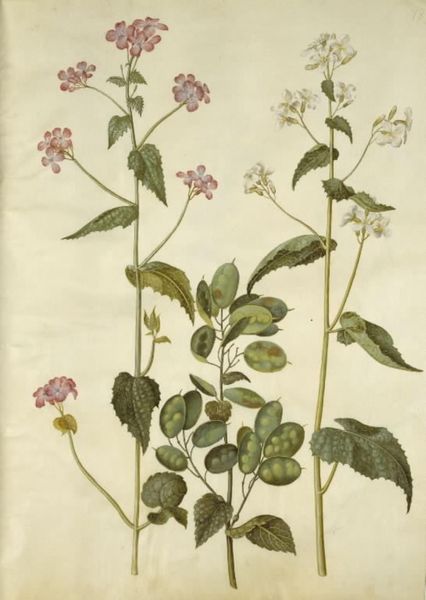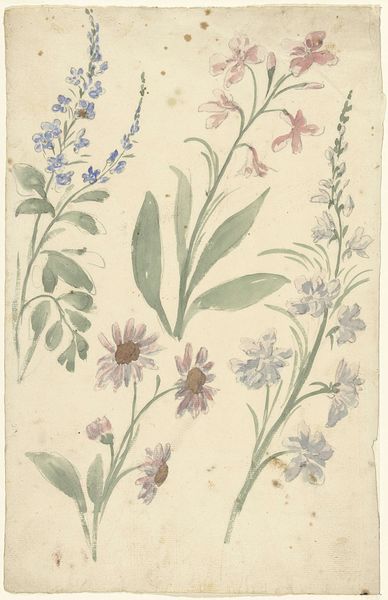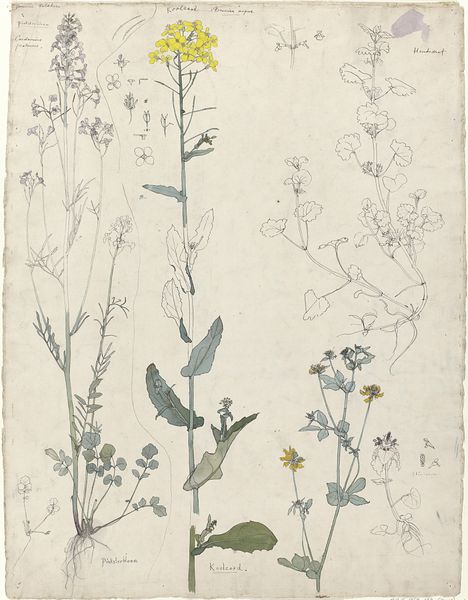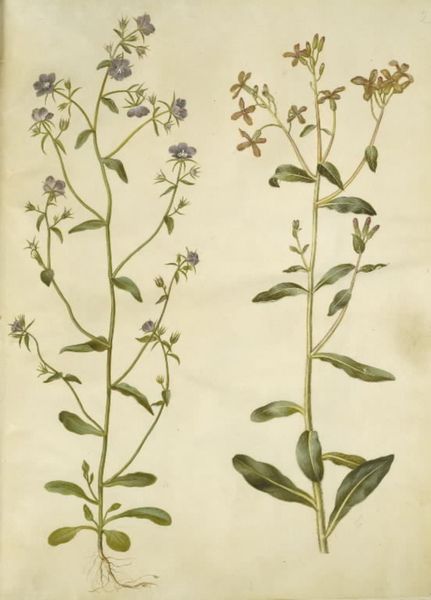
Viola cornuta (horn-viol); Viola tricolor (almindelig stedmoderblomst) 1649 - 1659
drawing, tempera, gouache, watercolor
drawing
water colours
tempera
gouache
11_renaissance
watercolor
watercolour illustration
northern-renaissance
watercolor
Dimensions: 505 mm (height) x 385 mm (width) (bladmaal)
Hans Simon Holtzbecker created this botanical study of Viola cornuta and Viola tricolor in watercolor in the 17th century. The image exists at the intersection of art, science, and the patronage system of the time. Produced in Denmark, it reflects the growing interest in the natural world that swept through Europe. These detailed botanical studies were not simply aesthetic exercises, but served a practical function, aiding in the identification and cataloging of plant species for medicinal and scientific purposes. Consider who commissioned and consumed this type of artwork. Botanical studies like these were often commissioned by wealthy patrons, such as members of the aristocracy or individuals involved in trade, who possessed a keen interest in botany and natural history. They also speak to the role of institutions like royal courts and universities in fostering scientific inquiry. To understand this image more fully, we could consult primary sources such as botanical treatises and garden inventories from the period, along with studies of Holtzbecker’s artistic milieu. This all reminds us that art is always embedded in a specific social and intellectual context.
Comments
No comments
Be the first to comment and join the conversation on the ultimate creative platform.

